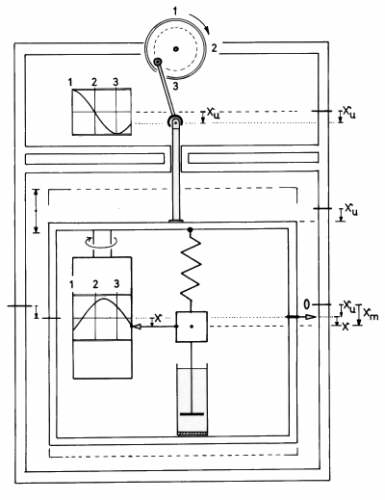3.2 Normal laboratory pendulum and seismographic pendulum in comparison - 2/3
In the case of seismographic oscillations however the whole laboratory is oscillating in keeping with the earth's movements, (fig. 29). There x shows the ground-movement in relation to a part of the earth that is not subject to the quake (so called 'inertial frame'). x is the displacement of the pendulum and xm is the absolute movement of the pendulum in the inertial system.

Fig. 29 Basic sketch of the creation of seismographic oscillations
| Obviously: | xm = x u
+ x , as well as |
| so: | |
| or: | |
If the earth oscillates harmonically to xu = ao cos ( w t ) then we conclude:

In the first seismographs at the beginning of the last century the recording of received signals was directly and mechanically connected to the seismographic pendulum. In this method of recording the friction of the pendulum's pencil on the paper must be overcome. For this reason the body of the pendulum (so called 'seismic-mass') was of significant weight. The 17-ton Wiechert-Seismograph, which remains in use even today at the University of Göttingen, is a famous example of this.